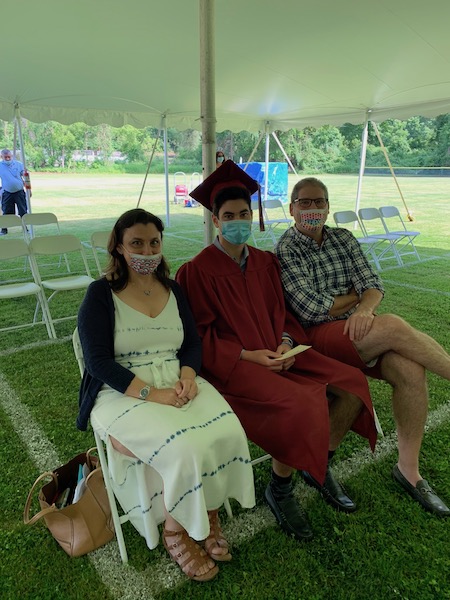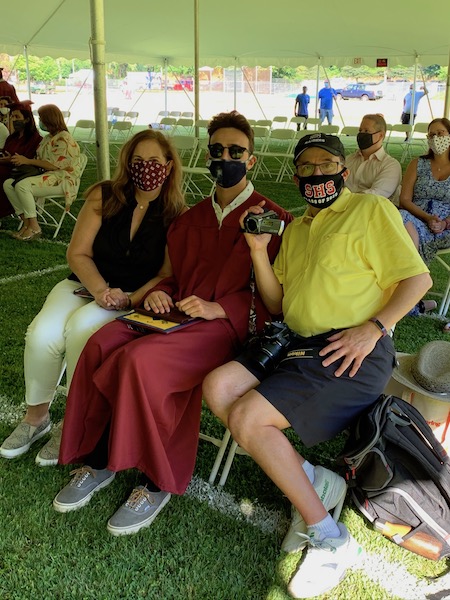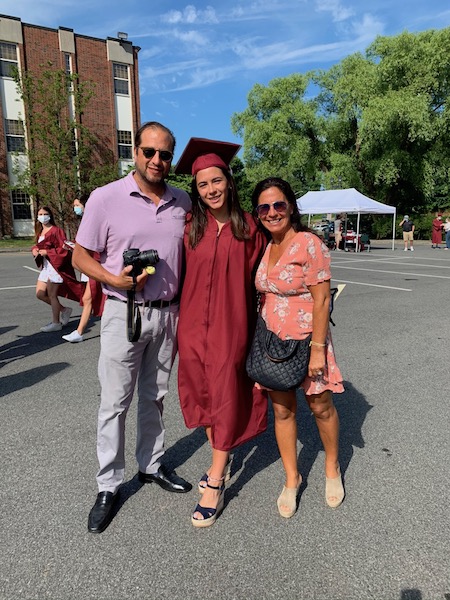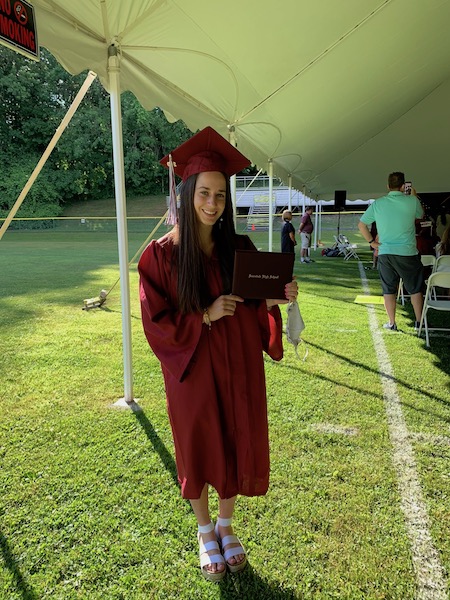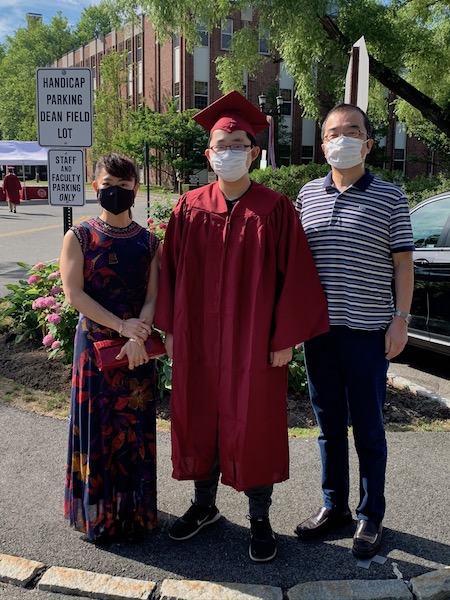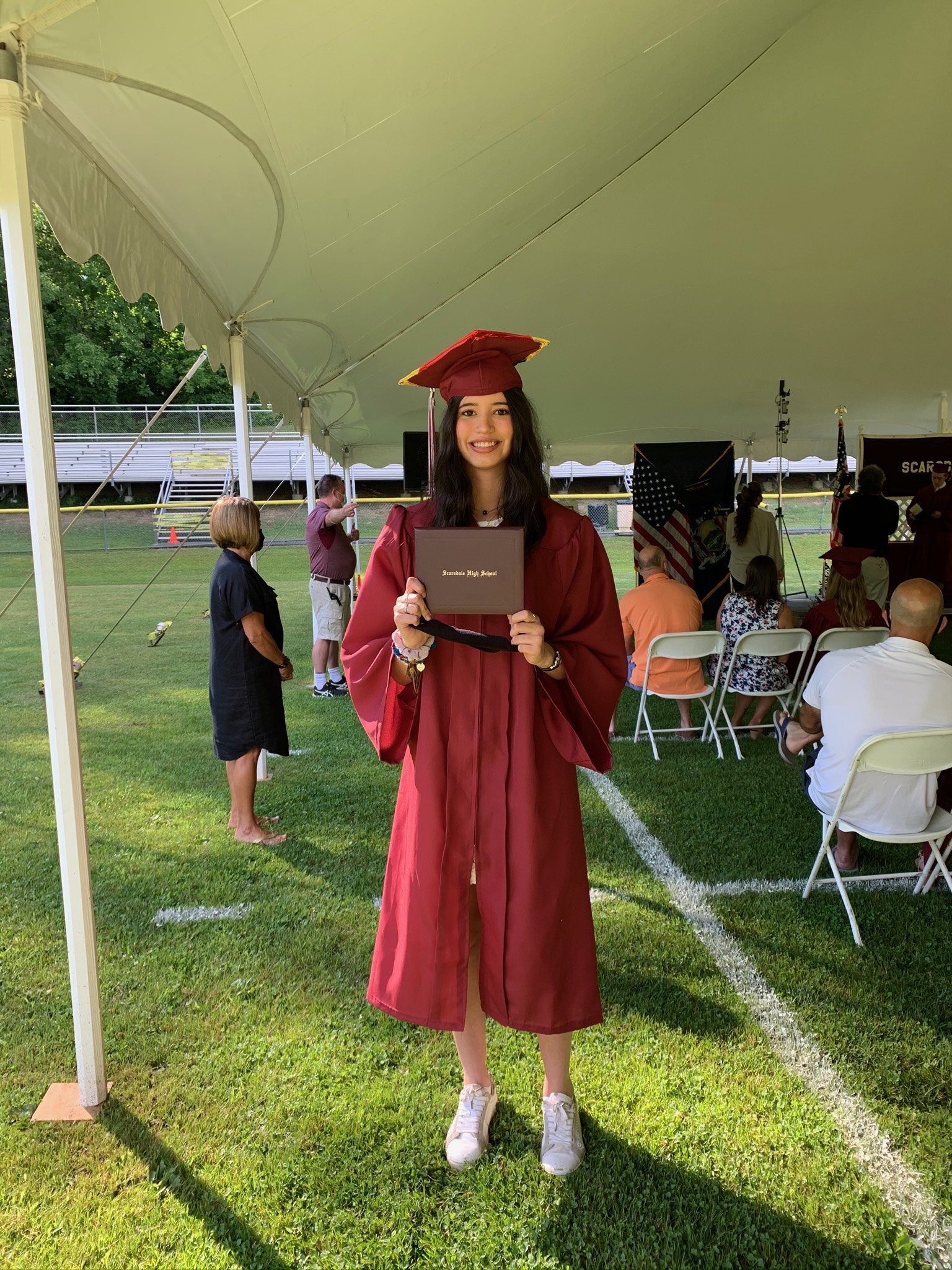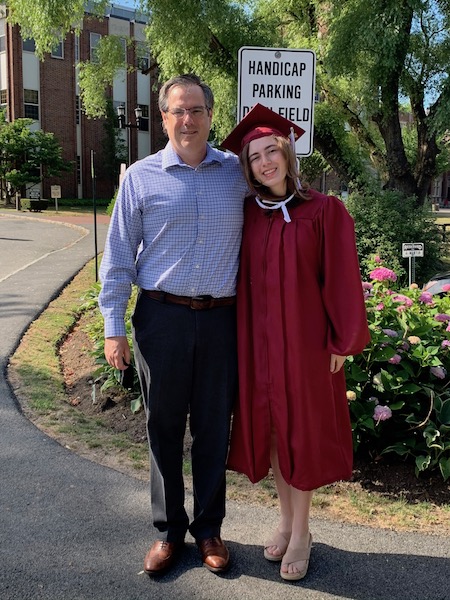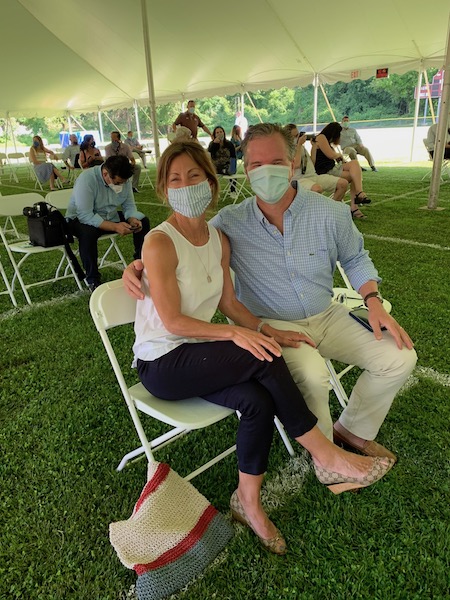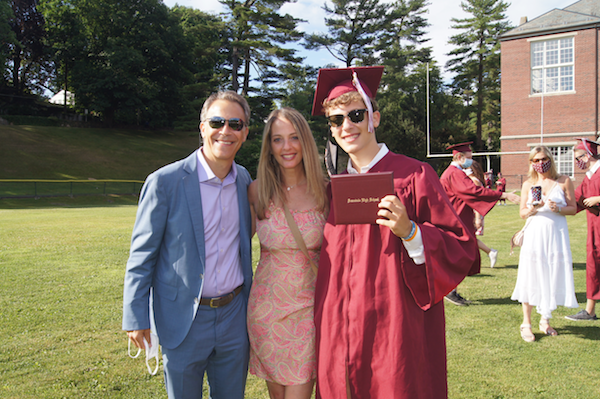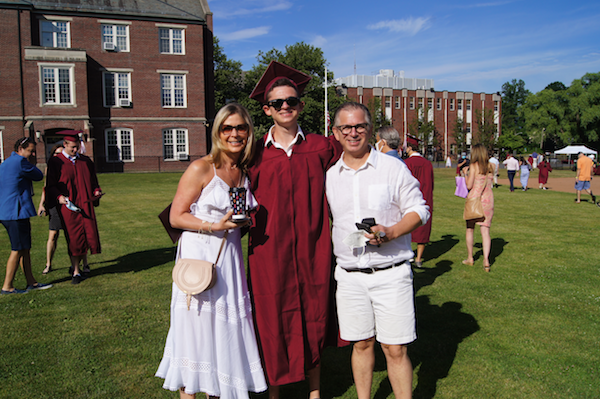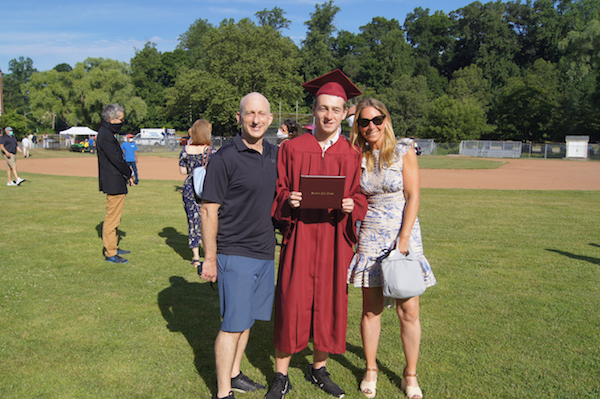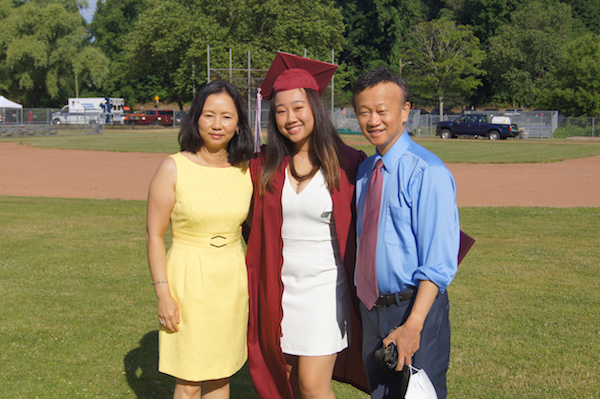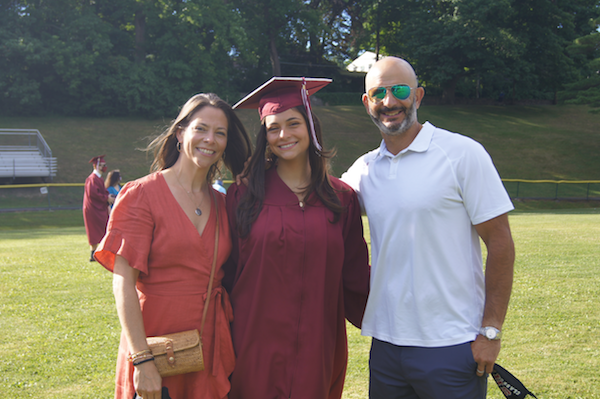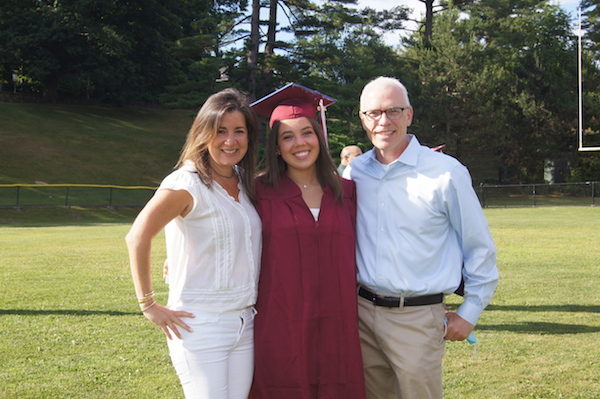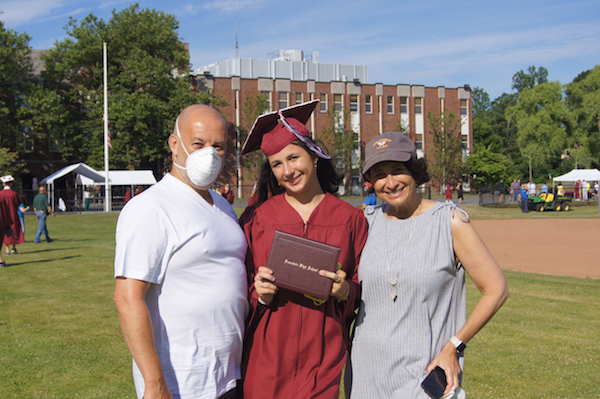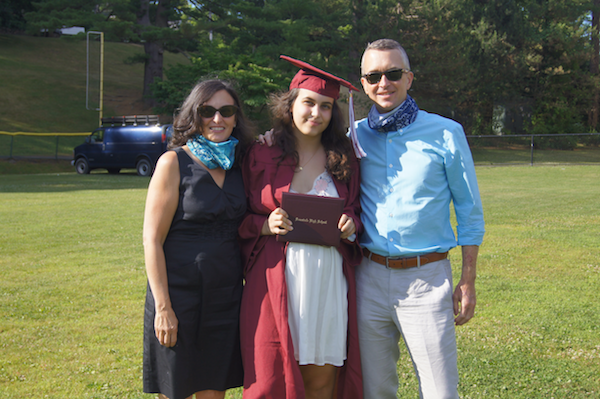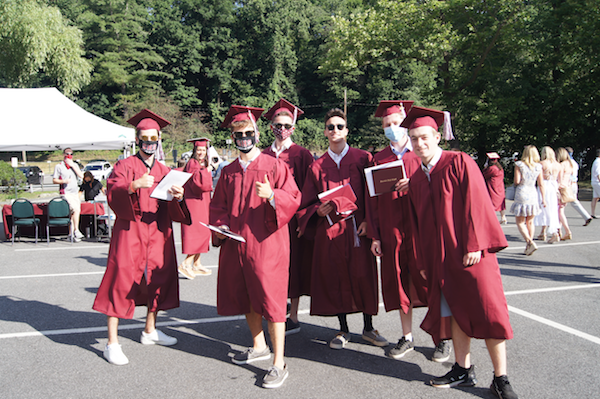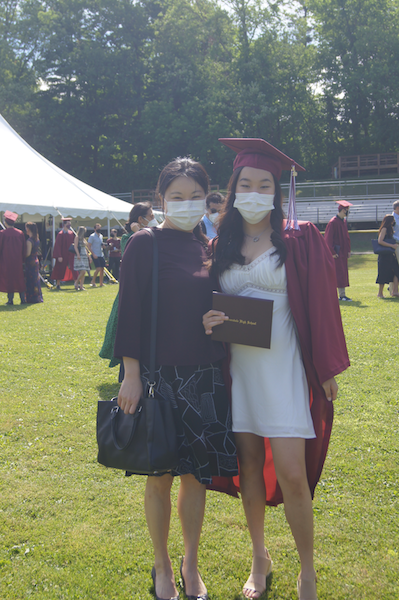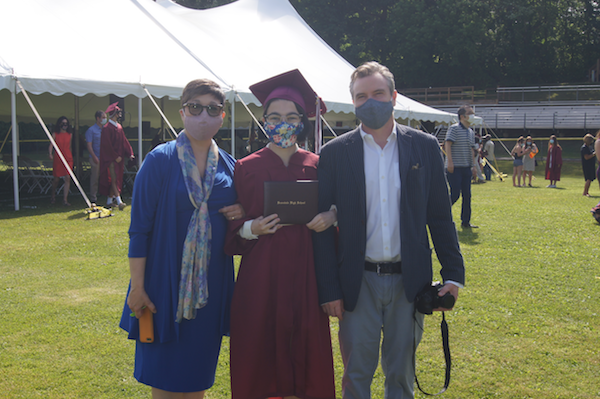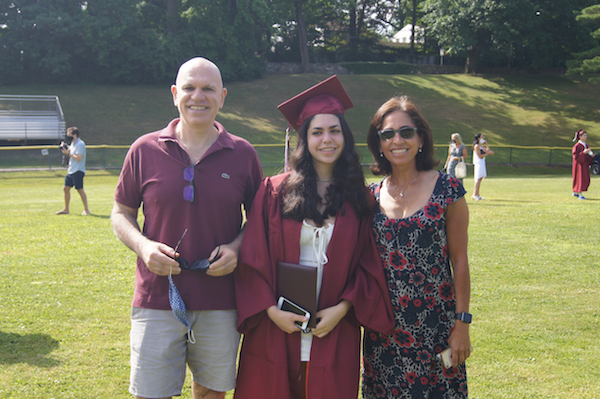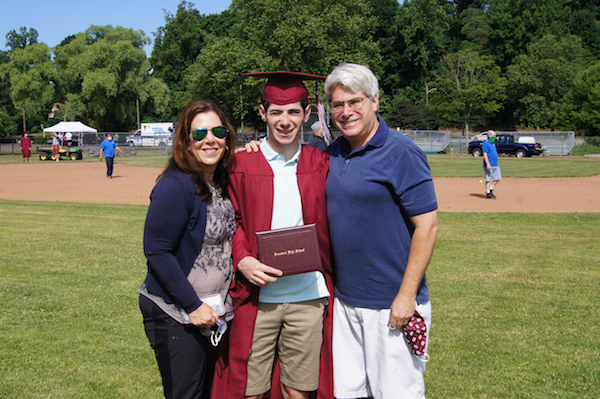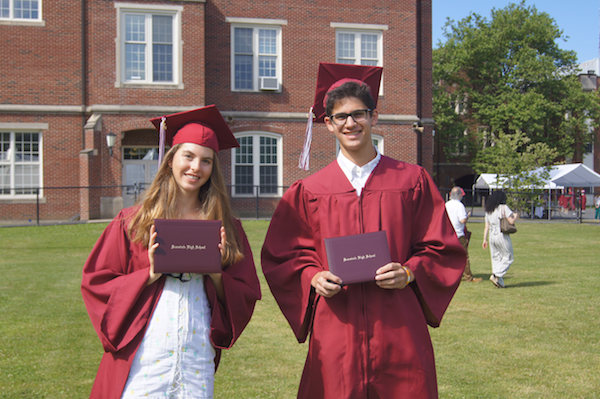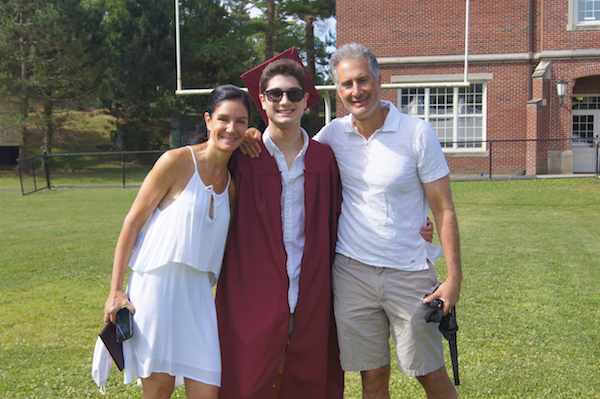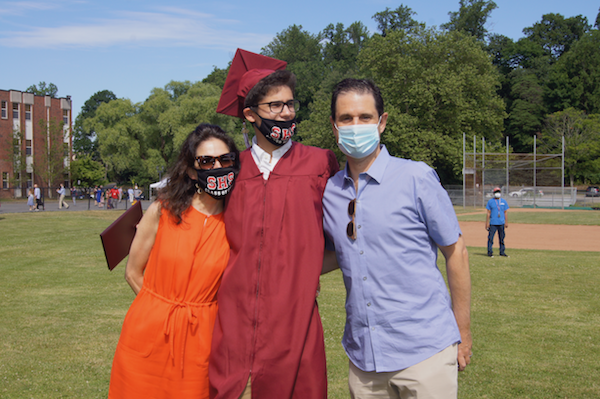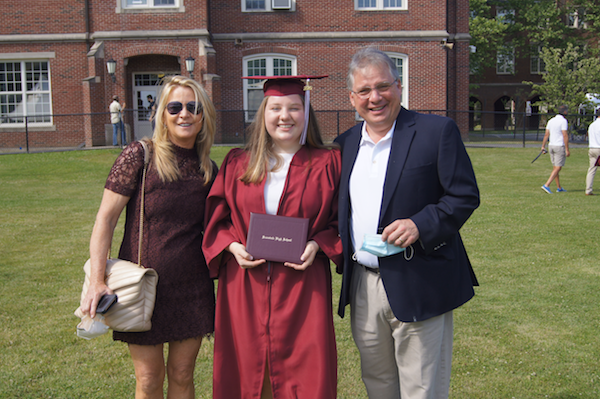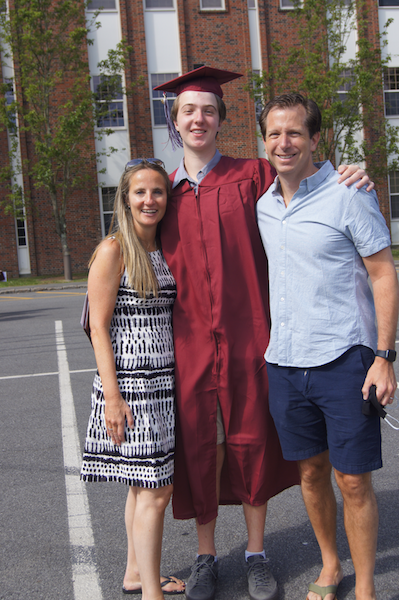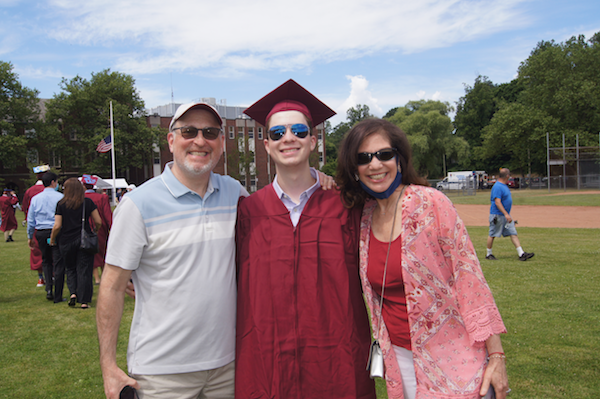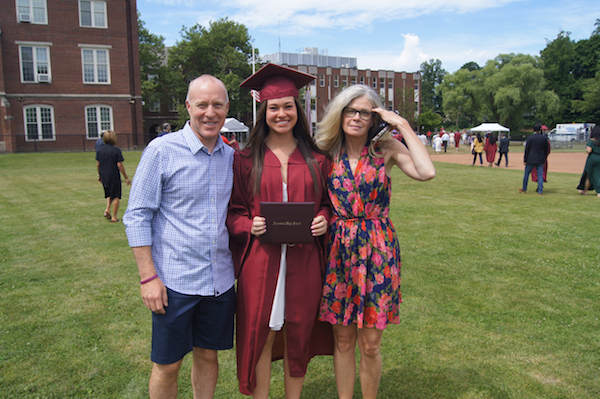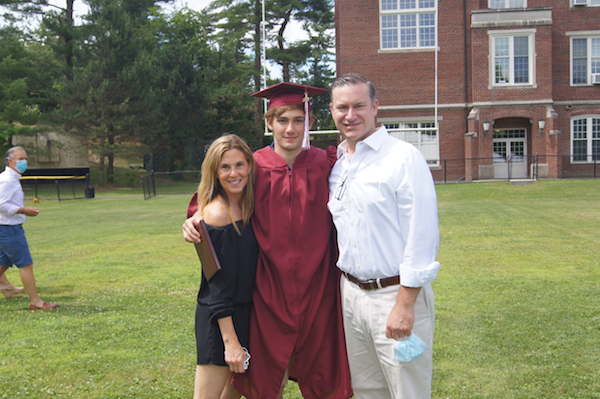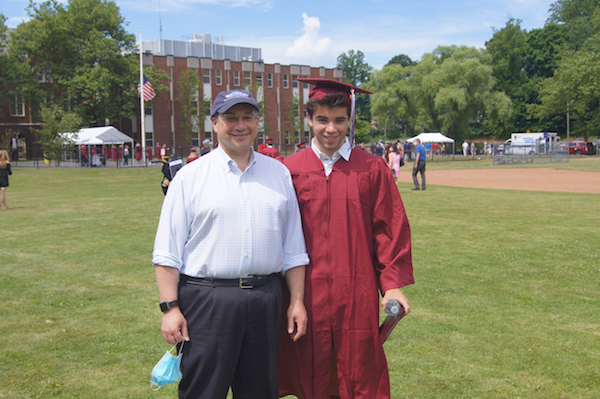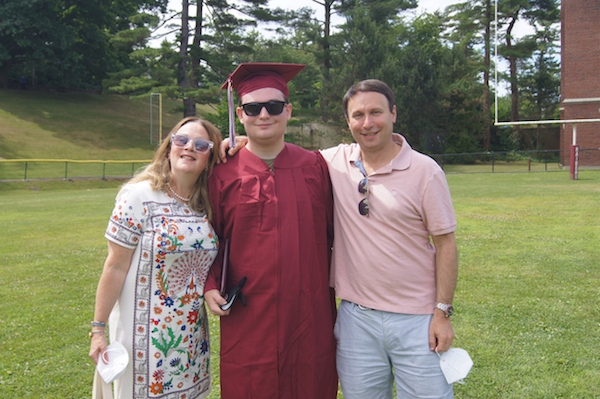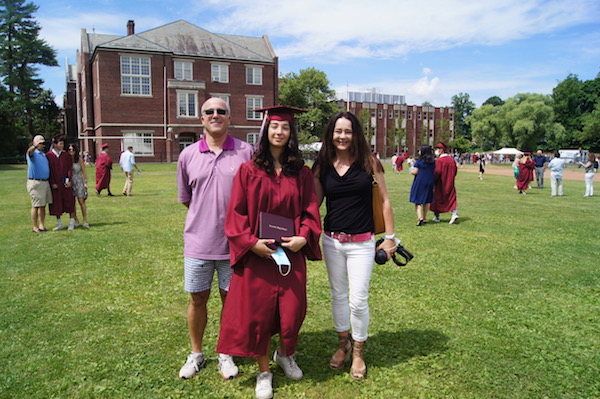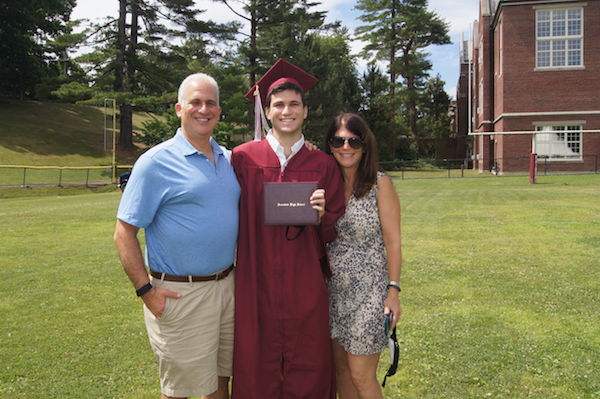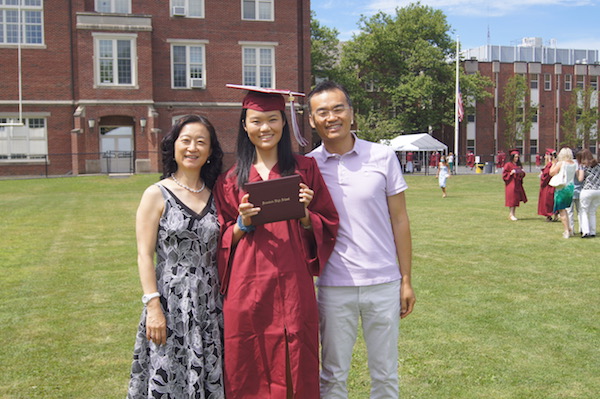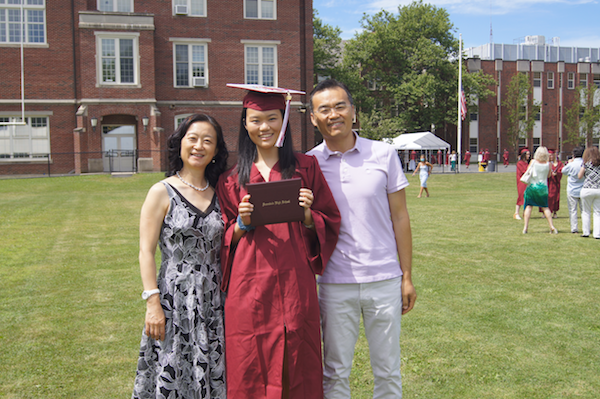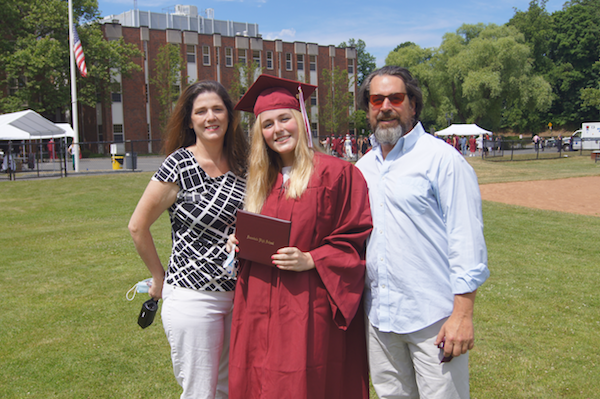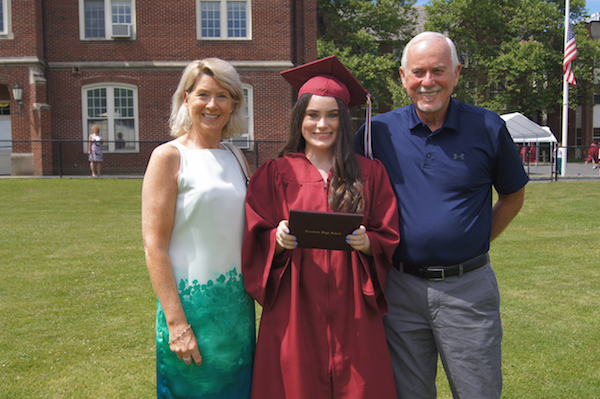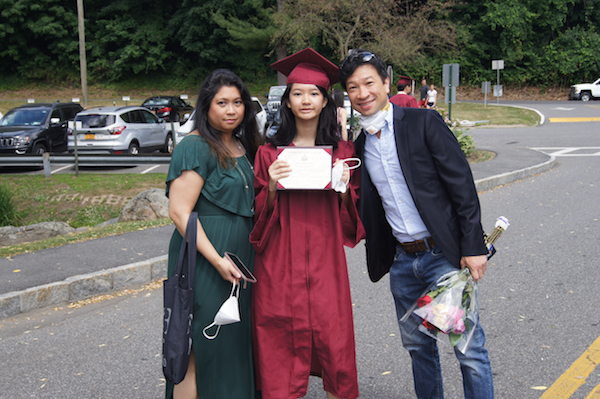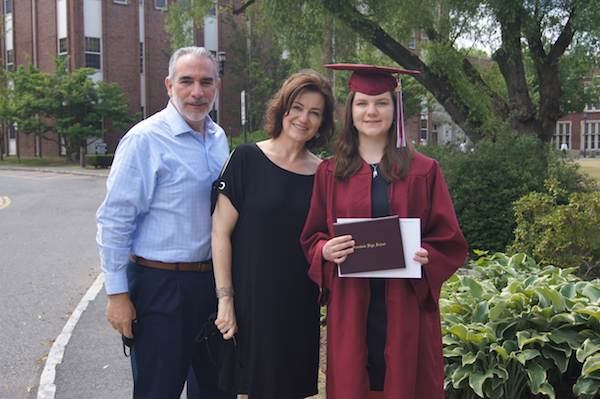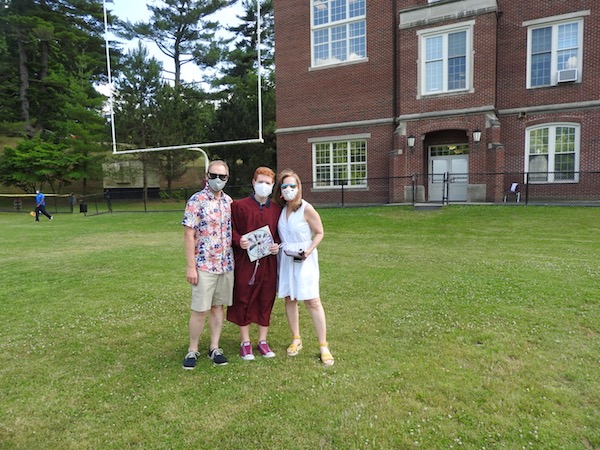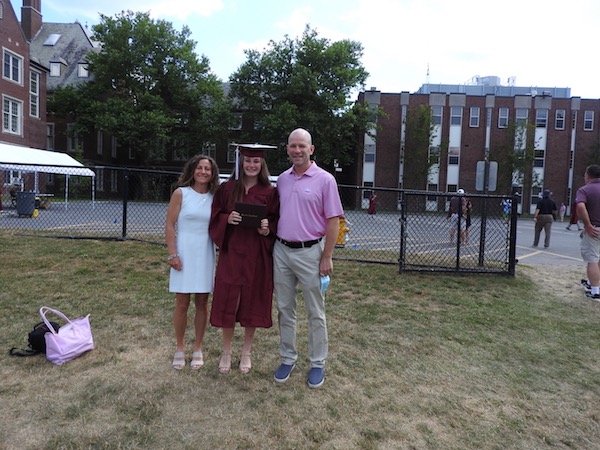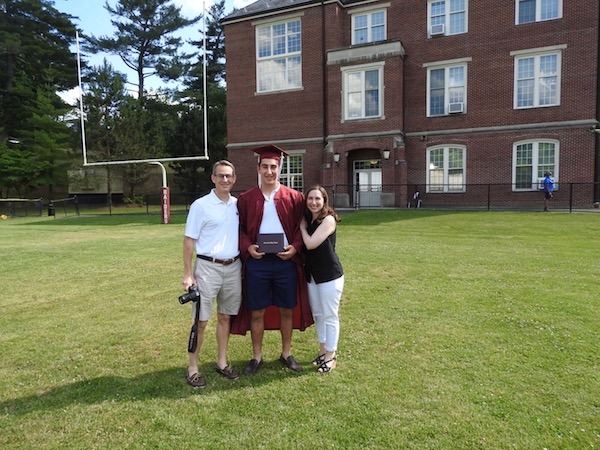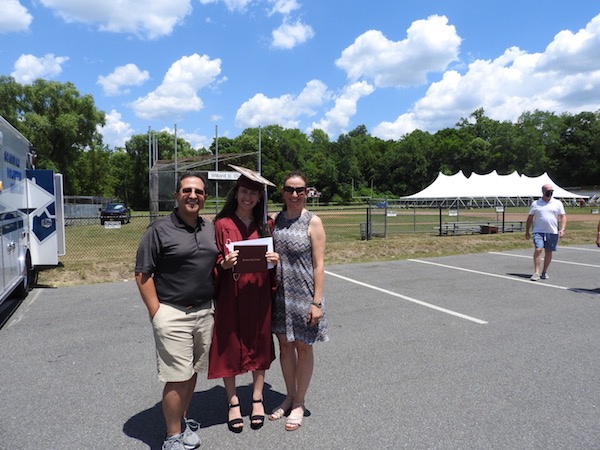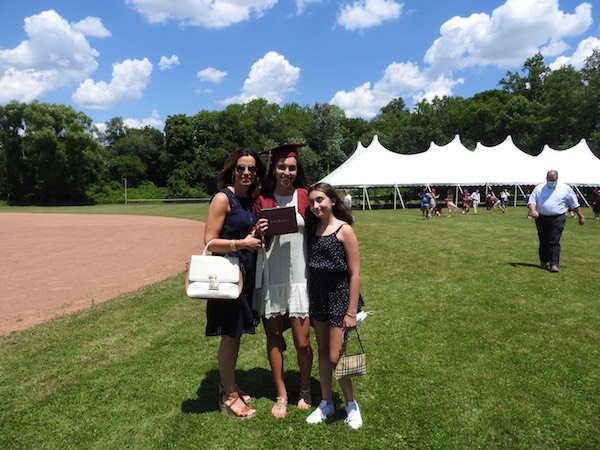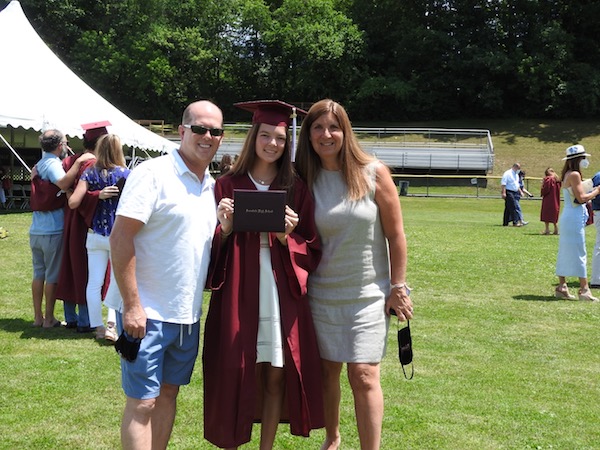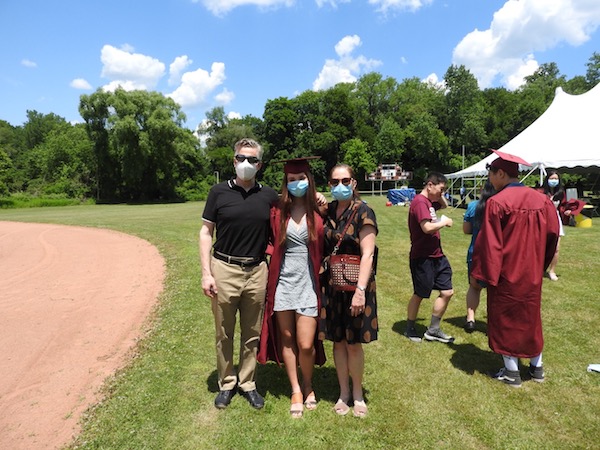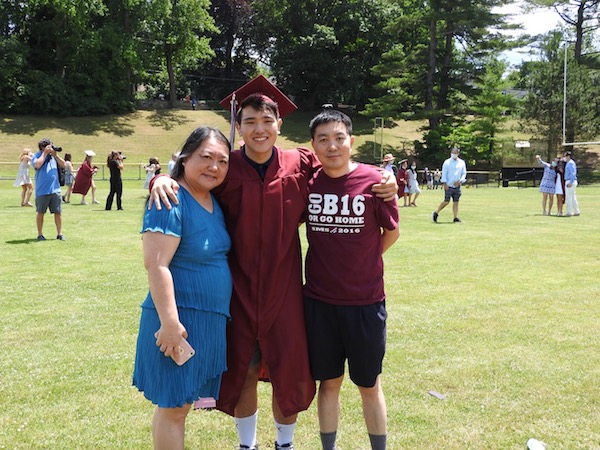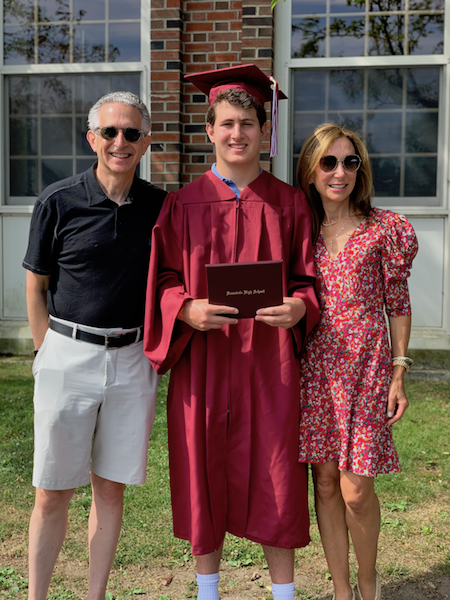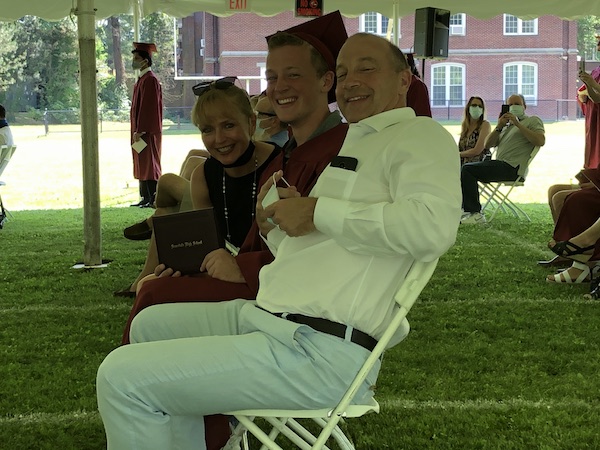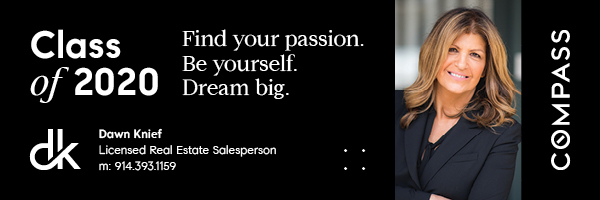School Board Reflects on Chaotic Restart Planning Process
- Details
- Written by Joanne Wallenstein
- Hits: 4486
After a wild week of quickly changing restart plans for the Scarsdale Schools, member of the Board of Education commented on their roles in the process and reflected on what went wrong at a midday meeting on August 6, 2020.
As background, the district had assigned a Restart Committee and specific task forces to formulate three plans for the return to school in September. The state required each district to submit plans for in-school learning, hybrid learning and remote learning, pending the Governor’s announcement of what would be permitted.
As July wore on, it became apparent that New York State would meet the health thresholds to allow for a hybrid learning program at the district, so this plan became the focus of the community. Parents anxiously awaited the administration’s recommendations for school schedules for the elementary school, middle school and high school which were scheduled for release on July 31. However during the prior week, parents heard rumors that the hybrid plan called for all remote learning for high school students, and for district fourth and fifth graders to use the high school building.
Up to that time, there had been no formal opportunity for community input and parents were up in arms that high school students would have no in-school experience. As a result, on July 28 the Board of Education held a marathon listening session where 1,394 people signed on and 69 spoke. Parents started their own Restart Review Committee to review the plan that was released and to offer their own perspective.
In response to those comments, the district reformulated the schedule and released their 83-page Restart Plan on the August 3. This one allowed two mornings per week of in-school attendance for high schoolers, but cut elementary school attendance to 9 am to 1 pm two days a week for a total of 7 hours per week of in-school instruction. undefined
This sparked a new wave of protest from the parents of elementary school students who complained that the youngest learners needed more in-school and synchronous instruction as many are unable to learn by themselves. After receiving hundreds of emails and listening to comments from that community, the administration changed course again.
On August 5, the community received an update saying that the district had changed plans again, and would run an A/B program allowing elementary school children to attend school everyday, either morning or afternoon.
The email said, “In the last 48 hours, the Board of Education and the administration have received an enormous amount of feedback from the community, specifically around the elementary hybrid model. This feedback has been overwhelmingly focused on the amount of live instructional time and the number of days elementary students will attend schools. To be clear, the committee looked to maximize true instructional time for students, organize it into meaningful, connected blocks of learning, and to minimize the non-instruction activities so as to allow the most meaningful experience possible in the core subjects. It was also predicated on Dr. Louis Corsaro’s, our District physician, preference for an A/B model due to the mitigating effects of a reduced number of contact days for any given student.
Having said that, the community’s priority, based on this overwhelming input, is frequency of student, in-person attendance. This has resulted in the administration’s decision to adjust the hybrid model for elementary from A/B to an AM/PM model.”
The bottom line was that the community received three plans in just one week, all issued just in time to meet the state deadline.
Looking back at the hectic week, many in the community wondered about the role of the Board of Education in the process. Were they aware of the plans? Had they gathered community feedback? Why was the process so chaotic?
At a meeting of the Board of Education on August 6, several Board members and the Superintendent clarified their views on what had transpired and what they had learned.
Board President Pam Fuehrer spent the last week responding to hundreds of emails from parents. She defended her role saying, “The restart plan is the work of management… we agreed that multiple task groups and a steering committee would do the work…. The Board is not involved in daily discussions. Only Ron (Schulhof) and I are on the restart committee. Many board members don’t know the answers to many questions. We don’t know the back and forth that occurs at the task forces. This is our first opportunity to discuss the plan.”
Fuehrer also reminded the community of the importance of the faculty saying, “Faculty input has been important to restart planning… We come to Scarsdale for the teachers and the staff. The teachers make the educational experience what it is. We want our teachers to be here for years to come. Right now they are working hard to adapt their model to new situation. We will get through this because of the teachers. Help them stay safe this year.”
She did not address the lack of opportunity for community input or the wild oscillations in plans once the district heard from parents.
In emails to the community Fuehrer said, “I cannot imagine our District and building leadership participating in and guiding this work any better than they are; reopening efforts have consumed the months of June and July for them, faculty leaders, and the many others involved in the task groups… The Board oversees the work as governors (not management) but we don't formally approve or take action on the plan or the opening-model. They are the sole responsibility of Thomas; Cabinet leads the work. However, Board members clearly understand and have taken the significant responsibility of oversight seriously. They have received updates on each Steering Committee meeting through June and July, have seen presentations and asked questions about the reopening of schools at our meetings, and have been submitting questions, thoughts, and recommendations to me and Ron which we share with our Administrative Team and consider as part of our work on the Steering Committee. After guidance was received from the State on July 16, the content and detail of email updates to Board members have increased. Thomas and I speak or communicate multiple times a day on this priority; the Board is informed and is providing critical guidance, direction, and oversight.”
School Superintendent Dr. Thomas Hagerman was direct. He said, ”I wanted to discuss the process …. This has been turbulent and chaotic…. It has required us to be flexible and adaptive…. We will continue to revise our plans based on the feedback received,” adding, “The feedback was very emotional.”
He said it was the district’s intent from the beginning to gather feedback before submitting the plan to the state and said that safety planning and meeting the state requirements were as much the focus as coming up with the schedule. He said, “Schools are high regulated and we were given a specific charge. To develop an in-person plan, a hybrid plan and an e-learning plan to bring students back to school in as safe a way as possible. We wanted to provide the best education possible while maintaining safety.”
He noted, “a clear sense of despair in the community” and said, “We are a community where consensus really matters. It’s been messy in terms of process.”
Board VP Alison Singer said, “This Board has always believed in incorporating feedback into our process. Thanks to Pam for responding to so many community members.”
Board and Restart Committee member Ron Schulhof acknowledged missteps. He thanked everyone involved and said, “While I appreciate all the work done to date and all the on-going work, I do believe we need to recognize the missteps we have made, especially over the last couple of weeks. While some of these missteps could be attributed to a tight timeline and working in an environment that none of us have been in before, I believe we also need to own up where the mistakes are on us. We owe that to everybody.”
“I do believe we are now heading in a positive direction. But I believe that is in large part because of the community coming forward. It should not take two petitions and hundreds and hundreds of emails to move us in a direction that meets the current priorities of the community. This Board was elected to represent you and we need to live up to that commitment. While the administration is responsible for developing the plan, the Board has an important oversight role that I believe needs to be exercised in a more prudent manner going forward. We need to do better the next time around - and the next time around is now. We have important work that lies directly ahead of us continuing to prepare for the start of school, including the very real possibility the we will be in an all remote learning environment.”
“We also need some healing. It was never supposed to be one part of the community against another or one stakeholder against another. We owe it to our students, teachers, parents and the entire community to ensure the process is transparent and that it happens in a timely manner, so everyone has an opportunity to engage and be part of the process.”
“We know that once the plan is submitted, we then need to talk about what implementation looks like, including the details about remote learning. What will remote learning look like? What are our goals? What we do we need to do to get there for every student, Kindergarten through 12th grade. I look forward to moving ahead in a transparent, collaborative, and constructive process. “
Board member Carl Finger also struck an apologetic note. He thanked Fuehrer to responding to a “ridiculous” number of emails, and credited Dr. Hagerman with making the right decision to close schools suddenly in March. He said, “As they have made these plans, it’s clear that safety is paramount. I don’t think we can state that enough.”
About the work of the Restart Committee he said, “There was a compressed timeframe … There was a huge amount of work to get done to re-envision the way school works from start to finish – that’s a big deal.”
He noted parents concern about scheduling saying, “The community has focused on direct teacher interaction. But the administration had to deal with a lot more and there was not a lot of time.”
He also noted that the Board had failed to get community feedback as delineated in the timeline. He said, “We put out a timeline and planned to share feedback with the community in early July. Even in the absence of state guidance. Unfortunately that was a missed step in the process. I bear responsibility for that not happening. That turned out to be a lost opportunity to avoid what happened in the past few weeks.”
Finger continued, “We set the right expectation and we missed that opportunity. It also diminished the opportunity for the Restart Committee to get feedback from the community. It’s always going to be the better course to get feedback up front.”
He said, “I am going to hold myself, the Board and the administration accountable for that. Going forward we should not miss opportunities like that.”
He also regretted that “Plans got leaked without the rationale behind them. I can infer there was a rationale around that. The Restart Committee lost the opportunity to present the rationale.”
About the rapid change in plans in reaction to community sentiment he said, “The wholesale adoption of a different plan was not the best course. We came back with another plan that went severely in the other direction and we got a lot of negative feedback on that as well. There were severe errors in the way we approached this.”
He concluded, “The plan now out there is closer to what everyone wants. I hope that it is safe enough. I appreciate that we were able to get the plan to where it is today. I think we have to do better so we can move forward instead of spending our time reacting to the negative feeling in the community.”
New Board Member Bob Klein said, “I will look forward instead of back.” He said, “I made phone calls to friends on other school boards… It is all in the details. Just because someone says they will do something it doesn’t mean they can. Other districts have not worked out all the details. The plans they reached were aspirational.”
He continued, “From all I read I think we may have to deal with COVID cases in our school system. A realistic plan is to assume we will open and then go remote. It is likely that that will happen. We need to consider the nimbleness of plans in light of this.”
He also discussed the A/B elementary plan vs. the AM/PM model. He said, “My wife and I found that for working families it is easier to get full time instead of part time help to take care of children. So having children on different schedules might be better for some.”
He ended by saying, “I hope the community can be patient and wait to hear the details. The cabinet has their hearts in the right place, and they are the experts. We need to rely on the cabinet and their steering committee.”
Also new to the Board, Amber Yusuf said, “It has been a wild month so far. We have all collaborated as best we can…. I appreciate that we are putting education first and I appreciate we are balancing this with the safety of our children and our staff. Everyone has varying tolerance for risk. Everyone will need to compromise. I would like to encourage our Board to continue to hold listening sessions, and issue the Q and A.”
Karen Ceske said, “I recognize the work that has been done. Perhaps it has been bumpy at times but it has been productive. We need to look forward with faith and confidence that we will do what’s best for our children and I hope we will do that in a respectful way.”
After a discussion of the e-learning program, Stuart Mattey and Eric Rauschenbach reviewed some of the costs of reopening school.
Due to the additional cleaning required by the am/pm model at the elementary schools the district will have to hire 9.5 cleaners at a cost of $750,000.
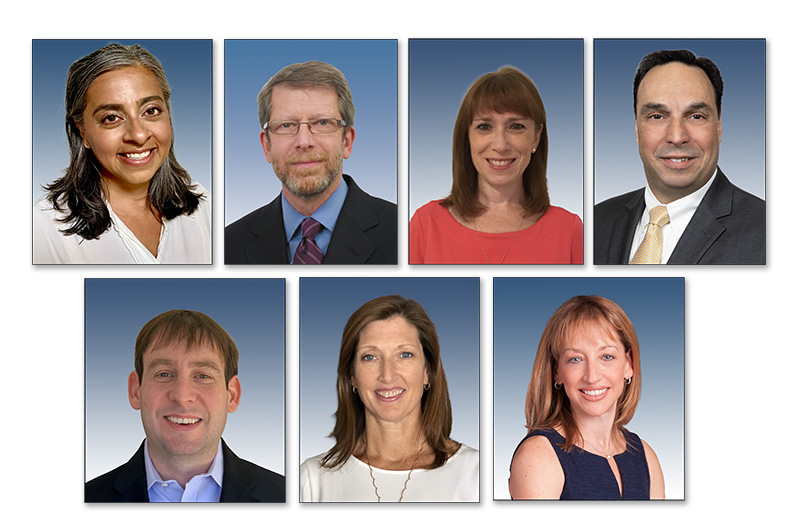 The district will need to purchase fogging machines and disinfectants for an additional $80,000. They have purchased $220,000 in PPE which should last for the duration of the crisis and face masks will be available for the staff. In lavatories, hand dryers are being replaced with automatic paper towel dispensers. Hand sanitizing stations will be installed throughout the buildings, and since the children can no longer use the water fountains, the district is adding water filling stations to all buildings.
The district will need to purchase fogging machines and disinfectants for an additional $80,000. They have purchased $220,000 in PPE which should last for the duration of the crisis and face masks will be available for the staff. In lavatories, hand dryers are being replaced with automatic paper towel dispensers. Hand sanitizing stations will be installed throughout the buildings, and since the children can no longer use the water fountains, the district is adding water filling stations to all buildings.
Since elementary school students will need to be transported twice a day, the district anticipates an additional $300,000 in transportation costs, though there will be some savings because there will be no athletic events.
The meeting included a short period for public comment.
Mayra Kirkendall Rodriguez asked the district to publish the minutes of the Restart Committee meetings. She asked for the public to hear from the Scarsdale Teachers Association with their views on PPE and training. She also asked for the district to publish their list of best practices for e-learning.
Eliza Raphael said, “When will there be opportunity for a dialogue – not just questions posed without any responses?”
Sharon Chesler said, “I understand you changed to the am/pm model based on feedback from parents. I think making this change within 24 hours without thoroughly analyzing it was not a good idea.”
David Krembs thanked RonSchulhof for taking the right tone given what has happened over the past few weeks and for concisely acknowledging that mistakes were made and that it is the board’s role to exercise oversight. He said, “I think people want to see the Board asking tough questions instead of giving lengthy speeches thanking everyone for what they have done …. I have heard that Rye Country Day is having webcams in all classrooms – kids will be able to ask questions live. Televisions will show the faces of the children who are remote. This will not reduce instruction time. We are not offering the same amount of time as regular school. I would like to see instruction time increased. I don’t want to know why we can’t have webcams. I want us to find solutions.”
Felicia Soler, said, “A sizable number of residents are considering all remote but there has been no schedule provided. It has left us frustrated. Please provide details for the all remote option. Detailed questions should be answered on the all remote option. These students are being treated as second-class citizens. Why can’t we consider livestreaming so they can be connected to the community that we live in. Some focus should be put in this direction.”
Marshall Kitain said, “The plan may not be perfect but it works. I think we can build consensus around it. Overall, when that email went out Wednesday night I could breathe a sigh of relief and heard it collectively in the community. The whipsaw that people experienced was extreme and unnecessary. There will be hard decisions over the next year. I urge the board to exercise oversight and gather community input – and have decision frameworks. We need to have community buy-in. It took two petitions to get there.”
Stacey Schutzer said, “Its not just the teachers it’s the aids, the administrators and the students that are making the district strong. At the middle school, at the 50% hybrid plan, the children are moving – it wastes 10 minutes between each class. Either ask the teachers to move classes or add in school learning for Wednesdays.
She also asked for the district to require 2-ply masks.
Schutzer continued, “I am beyond upset that the Restart Committee has not explored the fully remote plan. Children need to have their academics live daily. Parents need to know the synchronous and asynchronous plan on a day by day basis.
Irin Israel brought up some questions. He said, “We were told that using tents were insurmountable. I am not sure why. Webcams, why can’t we use them? For the full remote option there does not seem to be a plan and the spring was disaster- we would like to see the full remote plan written somewhere. Wednesdays seems like a wasted day – and it’s a lot. That day should be used for synchronous teaching.”
Valerie Phillips spoke against webcams. She said, “My 4th and 7th graders, think that if they raised a hand on a screen they would be treated as second class citizens. I think webcams are not the way to go.”
Michael Movshovich said, “Having worked with a kindergartner during the spring, they can’t do work on their own. The 2 hours 15 minutes a day in the current model is good. This is the only way for them to learn.” He asked for more synchronous learning, or more in school time with aids. He said, there is “No way for the kids to learn asynchronously. They are going to fall behind. I ask you to revisit that and prioritize in person learning for that cohort.”
Evelyn Harris asked, “How are the cohorts going to be formed? Will class lists be provided? Will cohorts be based on class? For 9th graders – will there be tours of the high school? She said, “The middle school gym is being accommodated for lunch – why can’t more of the high school space be utilized? We would like more in person time at the high school.”
Responding to questions, Dr. Hagerman asked parents to reach out to their building principals with questions specific to the school and the schedule.
You can watch the meeting here:
The District will hold additional public meetings as follows:
On August 11th, the Board of Education will host a meeting with updates on restart planning and opportunities for public comment. On August 13th, a public forum will be held by District administrators to present plans and answer questions. Finally, level-specific forums will be held by school principals on August17th (elementary), August 18th (Middle School), and August 20th (High School). Each of these meetings will be held at 6:30 p.m. Zoom links will be shared via an official Meeting Notice and posted on the District’s calendar.
District Pivots on Restart Plan In Response to Parent Feedback
- Details
- Written by Joanne Wallenstein
- Hits: 2170
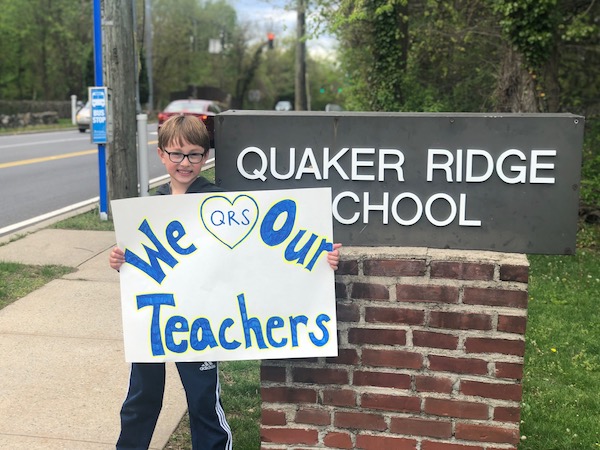 The Scarsdale Schools have adjusted their Restart Plan once more, this time to provide more school for both elementary and high school students. In response to an outcry from the parents of elementary school students about plans for the youngest students to attend school for two sessions per week, the school administration has changed course.
The Scarsdale Schools have adjusted their Restart Plan once more, this time to provide more school for both elementary and high school students. In response to an outcry from the parents of elementary school students about plans for the youngest students to attend school for two sessions per week, the school administration has changed course.
In an email dated August 5, the Superintendent Dr. Thomas Hagerman announced plans to offer more frequent in-school attendance for kindergartners through fifth graders, along with more synchronous, or live sessions to high school students.
The superintendent announced that elementary school students will now be split into A/B groups and attend school on alternative days either from 9 am to 11:15 am or 12:45 to 3:00 pm. The memo explains that 90 minutes of disinfecting will be required between the two sessions, and that additional custodians will be hired to clean. According to the schedule, Wednesdays are no longer blocked off for teacher planning - and now appear to be regular days on the schedule.
For high school students, additional synchronous instruction will be offered. Students will attend school for two half days per week with four afternoons of synchronous instruction at home.
The letter says, “For a class that would meet four times a week in regular school, a student will have a 50-minute in-person class and two 30-minute zoom classes for that class, for a total of 110 minutes of synchronous instruction as opposed to 85 minutes in the previous schedule. This hybrid schedule now allows all students to have two mornings in school and four afternoons with remote instruction and would guarantee that there are at least three contact points per week for a typical class for each student.”
Wednesdays at the high school show asynchronous instruction in the morning with the afternoons for “virtual and in-person small-group meeting and teacher tutorials.”
Due to the pivot, the district announced a delay in the release of a video explaining the program from August 5 to August 6, They will hold two public forums on Zoom on August 6 from 1:00 - 2:30 pm and another at 6:30 pm to hear feedback from the community. At 2:30 the Board of Education will hold a special meeting.
Managing the School District During a Pandemic: Scarsdale Schools Superintendent Thomas Hagerman Discusses the Biggest Challenge of his Life
- Details
- Written by Joanne Wallenstein
- Hits: 4935
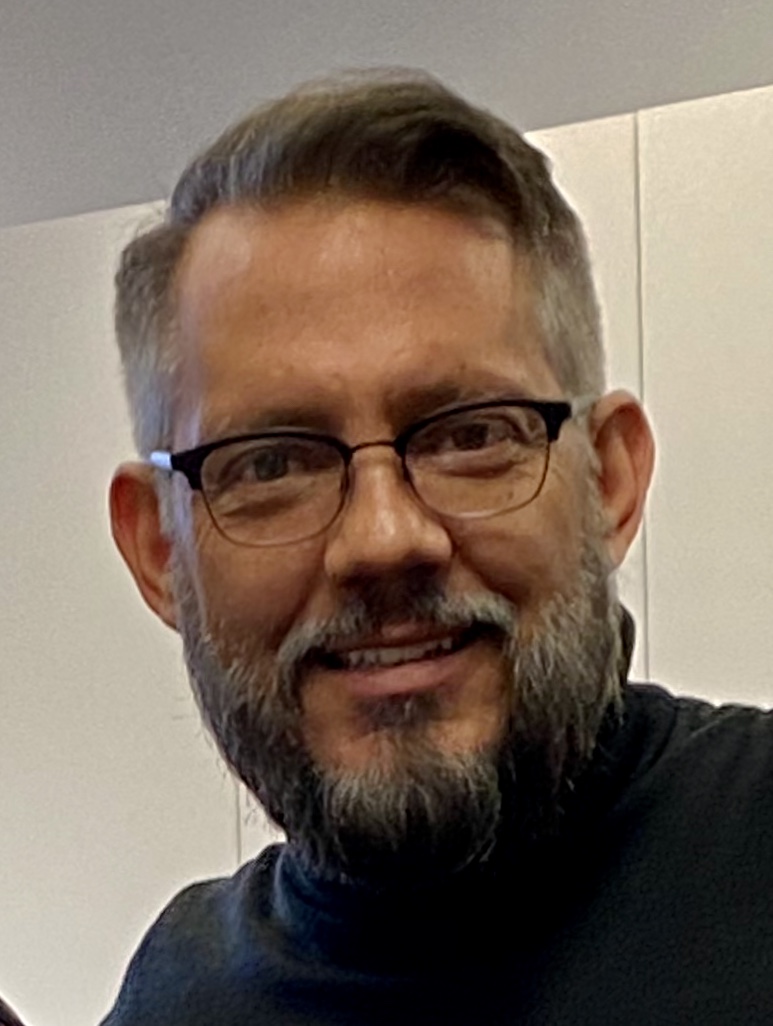 Scarsdale Superintendent Dr. Thomas HagermanIn his six years as Superintendent of the Scarsdale Schools Dr. Thomas Hagerman has confronted many challenges. With only a few months on the job, he faced his first referendum for an $18.12 million bond. A few years later he appealed to a divided community on the fate of the Greenacres Elementary School and more recently mediated demands for increased school security, lengthened the school day and even withstood the bucket challenge. But nothing could have prepared him for the sudden closing of schools during the pandemic. Almost overnight he oversaw the district’s transition from classroom instruction to e-Learning, and if that was not enough, he was then required to supervise Scarsdale’s first mail-in election for the school budget and school board. How did he manage and what guided his thinking?
Scarsdale Superintendent Dr. Thomas HagermanIn his six years as Superintendent of the Scarsdale Schools Dr. Thomas Hagerman has confronted many challenges. With only a few months on the job, he faced his first referendum for an $18.12 million bond. A few years later he appealed to a divided community on the fate of the Greenacres Elementary School and more recently mediated demands for increased school security, lengthened the school day and even withstood the bucket challenge. But nothing could have prepared him for the sudden closing of schools during the pandemic. Almost overnight he oversaw the district’s transition from classroom instruction to e-Learning, and if that was not enough, he was then required to supervise Scarsdale’s first mail-in election for the school budget and school board. How did he manage and what guided his thinking?
We asked the Superintendent questions about managing the Scarsdale Schools in this perilous time and here is what he shared:
When you first started to learn about the outbreak of the virus in China and then in Seattle, did you imagine that it would travel so swiftly and impact us here in New York?
When I first learned about the Coronavirus, like many, I was hopeful that it would not be as contagious or serious as it turned out to be. Once it hit the United States, I was not surprised that there was a surge of cases in New York. New York City, particularly, is a huge draw for both business and leisure travel. And, of course, there is strong nexus between NYC and Scarsdale due to its proximity for work, dining, entertainment, and other attractions. However, the reality of the situation really hit home for me with the infections and subsequent barricading of the COVID-19 “hotspot” in New Rochelle, only a short distance from our District’s boundaries and schools.
What led you to decide to close schools so suddenly in March? Did you have any idea that the closing would last for the entire remainder of the school year?
The closing of the District was prompted by a staff member who contracted the virus. This individual had access to multiple buildings over a period of days after infection. The initial closure was intended to provide a short period of time to disinfect our schools and to monitor for any further infections. Of course, I had no idea at that time that this closure would last the entirety of the school year and beyond.
Why was the decision to close schools in March in your hands in contrast to now where the Governor will decide if and how school re-opens?
Since this was at the very beginning of the Coronavirus infection in our area, there was no State guidance offered at that time, except to work with our local departments of health. Our initial closure was made with the direction and support of the Westchester County Department of Health. After a number of schools found themselves in the same situation, the Governor recognized that this was a public health emergency, and assumed the responsibility for school closures. Since that time, he has been directing this work through executive orders. He will continue to do so until he believes that it is safe for schools to act on their own accord again.
Do you think the district should have more local control over how we proceed in September?
The Governor will determine whether schools can reopen sometime in early August. He has asserted that this will be predicated on maintaining a low infection rate for a 14-day rolling average. It is widely anticipated that the Governor’s Office will not provide specific details of how to open schools or what structures districts must utilize. In other words, we believe at this time that there will be some local control on how we proceed in September, but we do know that we will need to adhere to guidance by the CDC and local health departments, NYSED, and the Governor’s Office.
Discussing the transition to eLearning, you once said, “We’re trying to fly the plane while we’re building it.” What were some of the first steps you took to move learning from the classroom to the computer?
The earliest steps of this work included inventorying the needs of faculty and students. This ranged from identifying hardware/software needs; determining professional development required to use Zoom and other online platforms; reexamining and reformatting core curriculum, along with the role of specials; and tracking, monitoring, and supporting all our families that were in crisis due to health or other family issues.
What were some of the surprising successes and what proved very difficult to achieve?
A clear success was the willingness of staff and families to pivot so quickly and synchronously. There was also a collective understanding that we were experiencing something extraordinary and, no doubt, extremely challenging. People were exceptionally patient, kind, and willing to work together in the face of adversity. The challenges, of course, were many: families were in crisis due to health issues; we had never planned for our District to move into an all remote eLearning format, and there were many technical issues to work through; isolation became increasingly more difficult over time for students, staff, and families alike. Of course, most heartbreaking of all was the loss of so many traditions that students had been looking forward to as the year progressed such as spending time with friends and teachers on a daily basis, sports events, fine arts performances, moving up ceremonies, and graduation, to name just a few.
I have heard that Scarsdale’s eLearning program has become a model for other districts. What aspects of the program are most successful and what are others trying to emulate?
Many colleagues reached out to me during this time to be a “thought partner” on how to implement a successful eLearning program. These discussions involved accessing and supporting technology for all students remotely; providing real-time professional development while continuing to teach daily; keeping wellness at the forefront of our work for students, staff, and families; communicating regularly (almost daily) with staff and families on a wide range of topics; providing pastoral care to our school community, along with appropriate academic support; keeping District operations, like Board work and Budget development, moving forward with all the other competing interests; preparing students for major transitions, especially seniors, but also other transition years (5th and 8th grades); and assuring that special education and other services were provided for vulnerable populations. We were able to manage all of these issues due to the incredible commitment and professionalism of all of our teachers, administrators, and support staff. Every person played a critical role not only in fulfilling their individual responsibilities but also in their willingness to support each other throughout this closure.
We have also heard that e-Learning is more frustrating for the youngest children in the District. Can you comment on educating children in K-2 online?
Fundamentally, we believe that a Scarsdale education is best-experienced face-to-face between teachers and students. While many older students have the skill and autonomy to learn more independently, our youngest learners need the support and scaffolding of their classroom teachers to be successful in almost all academic endeavors. Since learning is also a social construct, online education is a poor substitute for opportunities that teachers can create in class for the authentic engagement of all students. From surveys and other feedback, we know that our youngest students missed their teachers and classmates tremendously.
If the District is forced to continue with e-Learning for the youngest children, do you anticipate any changes to the program in the fall?
We do. These plans are being formulated by teachers and restart committee members throughout the summer. These plans will be released in August once the Governor declares whether schools will be open physically to all students, or whether we will continue with remote eLearning or some hybrid of both.
How do you respond to parents who are unhappy with the options they face for their children’s education?
As with all issues, we ask parents to follow our Parent Educator Partnership protocols that were jointly written by the PTC and the District and can be found on the District website. It outlines the problem-solving process for most school-based issues and concerns. The first step in this process is contacting a child’s teacher directly, sharing individual information, and working towards a mutually-agreeable solution. In the event concerns are not fully addressed through this process, the next step would be to contact building administration. District administrators are also available to provide help and support once these steps have been followed.
Looking back on your career, were there any other challenges you faced that prepared you for this moment?
Some might argue that every past action in our personal and professional lives shapes every decision ahead of us. Certainly, as a school superintendent, I have faced many challenges in my career, and I suspect these influenced my thinking (even if only subconsciously) over the past many months. But, to be clear, I have never had to contend with a global pandemic that changed life as we know it--in almost every respect. Like most of us, there is no doubt in my mind that this has been the biggest challenge of my life so far.
Did you fall back on any educational philosophy, decision-making rubrics or specific methodology to approach these complex issues?
I wouldn’t say there was a specific educational philosophy that guided me through this work. My parents were very involved in the church when I was a youngster. One of the things that I came to understand early in my life as a result of this was the importance of pastoral care during times of crisis. In order for people to process difficult situations, they need to have some fundamental assurances: (1) they need to know what is happening (to the extent possible), (2) they need routines and “normalcy”, (3) and they need to know they are cared about and have a support network. While this type of work isn’t necessarily intuitive for me, it is something that was at the forefront of my thinking during individual and group interactions, communications, and all decision-making throughout this ordeal. It definitely caused me to grow both personally and professionally in ways I never imagined.
Do you confer with other superintendents on the response to the virus?
Yes, I conferred regularly with Westchester superintendents throughout this process. We used this time to interpret State guidance, to advocate alongside our local and State politicians for needed support, and to problem-solve a host of issues. We readily shared resources, and, to the extent possible, tried to make joint or similar decisions.
On the Election
The Governor issued very late guidelines on voting procedures for the school budget and school board election, putting the onus on the district to meet a series of deadlines and conduct their first ever election by mail. Given this condensed timeline, were you concerned that the district would not be able to comply with election law, conduct the election and tabulate the votes; Especially given the regulations regarding COVID?
I was absolutely concerned about this year’s mail-in election, especially since school buildings were closed and strict adherence to laws, regulations, and guidelines was expected in spite of the last-minute changes to election procedures. The only way we were able to make this happen successfully was through the extraordinary efforts of my fantastic District Clerk, Honore Adams, who spearheaded this work, and a team of dedicated employees, who volunteered their time and energy to support our efforts navigating this new process. Of course, having the District’s attorney on speed dial was also another critical element. In the end, though, the real “thank you” belongs to the Scarsdale community, who overwhelmingly supported the District, even in our darkest hours. Although I have always felt the community’s support, this year’s affirmation really mattered on multiple fronts.
The Future
Even though the virus appears to be somewhat under control in Westchester, the spread is out of control elsewhere, making it very hard to predict what will happen next week, next month or next year. Given all of this uncertainty, how do you set a personal agenda for yourself and one for the District?
While the pandemic brought many changes to our lives, it did not alter our priorities, which has always been attending to the health and safety of our students and staff; providing the best possible educational experiences for our students; and partnering with and supporting our students, staff, families, and the broader community. Pandemic or no pandemic, these values will continue to guide our work--both in the short- and long- term. Both the District’s agenda and my own are inextricably linked to these larger guiding principles, and they will remain steadfast in the years to come regardless of the obstacles that we may confront together.
If you had a crystal ball, what would you predict school will look like in spring 2020?
The thing about predictions is that they are based on past experiences combined with an expected future, based on norms and logic. While many countries have made marked gains in the containment of COVID-19, the United States continues to struggle. In no small part, this is due to erratic behaviors closely associated with a disregard for medical science and public health advice. On the one hand, if people would put the health and well-being of others in front of their own desires, I believe we could limit contagion and return to lives of relative normalcy. However, there have been many examples of individuals acting in their own self-interest, causing surges of infection across the nation. Our greatest hope for the spring of 2020 is that the leadership at the highest levels of federal and state government continues to provide data-driven, scientifically-proven guidelines to the public which are then consistently and rigidly followed until longer-term, viable solutions are implemented. While I am not confident in that outcome at this time, I do remain hopeful for a calmer and healthier year ahead.
Over 1,000 Participate in Zoom Listening Session on Restart Plans for Scarsdale Schools
- Details
- Written by Joanne Wallenstein
- Hits: 4576
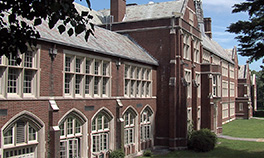 In an unprecedented outpouring of concern, 1,394 people signed on to a hastily arranged virtual “Listening Session” that was arranged by Scarsdale School Board leaders and the Restart Committee who is planning for the reopening of Scarsdale Schools in September on Tuesday night July 28.
In an unprecedented outpouring of concern, 1,394 people signed on to a hastily arranged virtual “Listening Session” that was arranged by Scarsdale School Board leaders and the Restart Committee who is planning for the reopening of Scarsdale Schools in September on Tuesday night July 28.
The Zoom session was called after parents expressed concerns about a rumored plan that would assign all high school students to virtual learning with little or no in school attendance. There was so much to say that the session extended for almost five hours allowing 69 people to speak.
With the district’s plan due to the state on July 31, and no firm information about what that plan would be, parents expressed outrage about secrecy, lack of transparency and community input into a plan that deeply affects parents and children in Scarsdale. Parents with high school age children expressed dismay about a scenario that would leave kids to learn at home, depriving them of social interaction, the opportunity to forge relationships with peers and teachers and to experience all that Scarsdale High School has to offer. They feared that teens who were isolated and deprived of social opportunities would be at risk for depression, substance abuse and even suicide.
Parents of younger children said that their kids needed a consistent program to learn and expressed frustration with the e-learning experience in the spring, including disparities in instruction time, inadequate interaction with teachers, unpredictability of scheduling and more.
Still others said they had decided not to send their children to school in the fall and wanted to know what the district could offer their children at home.
School Board President Pam Fuehrer said the goal of the session was to gather community input in regard to scenarios for the restart in the fall. She said, “We all share the goal to get kids in school when it is safe.” In response to criticism from the community that they should have been advised of the plan prior to its submission to the state on 7/31, she said the 7/31 date is “arbitrary for local planning purposes.” The district was required to submit procedures for all three scenarios to demonstrate it has done appropriate scenario planning. According to Fuehrer it is not a deadline for committing to an opening structure. The scenario may change this summer and throughout the year. For now, the committee has dismissed a scenario where all are in school full time due to the social distancing requirements. Therefore, there are considering hybrid plans which have a lot of complexity. She said that some of the details of the plan have been “leaked to the community.”
Board Vice President Alison Singer said, “For those of you who may not know me well, I am the mom of a daughter with very severe autism. I have had to be her voice and her advocate every day of her life and I know, first-hand, how scary it feels when it seems like someone is in a position to make a decision or enact a policy that I think could negatively affect her. And so I understand why there is so much emotion in the community right now. When I read your email comments and see the inflammatory posts on social media, I try to remind myself that as parents, we are all coming at this from a place of love; love for our children, and fear that they could somehow be harmed. Sometimes that love and fear becomes muddled and manifest as anger, when really we all just want what’s best for our children. Please know that that is also what WE want, as a board. Rational people may disagree on what’s best, and tradeoffs must be made as we battle covid-19, our real enemy in all this. But please try to speak to each other, and to us tonight, with the recognition that everyone is trying to focus on how best to serve our wonderful community. We will listen that way as well.
Over the course of four hours with 69 speakers, there were many recurring themes. Speakers wanted to know why the district had not share their plan, why the community had not been engaged in the process and why there was little information shared from the committee.
Furthermore, many questioned the interpretation of the results of a survey that was sent to parents which they believe led to the wrong conclusions. For instance, the superintendent concluded that for high school students, choice in course selection and differentiation in schedule were more important than in-school attendance, which parents said was erroneous.
Many others discussed health and safety. A doctor urged the committee to engage an epidemiologist and an immunologist to advise them, and to include COVID testing in their protocols. He said, “be guided by the science.” Others asked if the ventilation systems in the classrooms had been upgraded to prevent the spread of the virus which is largely airborne. And many asked why the district had ruled out the use of tents on school property since outdoor interaction is said to be safer than indoor.
Comparing Scarsdale to other peer districts, parents said they found none that were not offering some in school attendance to high school students. Parents reported that most schools are using the Hybrid AB schedule, which splits the in-school time and gives all students access. Once caller said, “Scarsdale seems to feel like the high school is too complicated and given up.” Instead, several parents spoke about developing student cohort groups that remain in class together and limit exposure to one another and the teachers.
Another parent spoke about the importance of the seniors in the Class of 2021 who will apply to college soon and need a testing schedule to allow them to take standardized tests and help with the application process.
Here are excerpts from just a few of the many people who spoke.
Kim Greene-Liebowitz said “Many of us had not been given the opportunity to participate… this leads to frustration, disenfranchisement and dissatisfaction… Not enough out of the box thinking has been done.” She continued, “I’d like to focus on mental health.…. The need of younger children for in person learning does not negate the needs of older children for in-person learning as well. My children are capable of logging onto a computer does not replicate the experience of school…. My children are isolated and depressed. It is difficult to form friendships with peers and relationships with teachers online. According to the Pew Research Foundation, 13% of teens experienced at least one major depressive episode in the past year. That’s 3.2 million teenagers. …in prior pandemics up to 30% of children have experienced PTSD which affects the developing brain adversely. For comparison, as of July 22. 2020nthere have been 226 deaths from COVID in people 0 -14 years of age in the United States. Consider this – in 2017 there were 514 suicides in people ages 10-14 and 6,252 suicides in those ages 15-24. Keep these statistics in mind when you make your plans as depression and anxiety increase and social isolation becomes the norm we are putting our youth at incredible risk, risk that far exceeds COVID. Prevent a disaster by sending our kids back to school in the fall. It is critical to their mental health.”
Philip Sanchez called “E learning a disaster for teachers and certainly for students. He said, “my kid hated it.” He said, “Look at the problems we are all having with Zoom and imagine the kids dealing with it. Discussion equity, he said, “all kids matter. Reflecting on his own experience he said, “I grew up in Scarsdale and was fortunate to receive the stellar education that Scarsdale is known for. I moved back because I wanted my children to have the same education specifically at the high school level. The vast majority of people come to Scarsdale for the High School. These kids are what make Scarsdale known throughout the country. Now we have basically gone from first to worst with on line learning.’ He urged the board not to “trade students against each other, that’s not who we are. There has to be a better way than tossing our high school students learning out the window.” He complained that there has been “zero transparency and suggested that the district adopt “A true hybrid model that would put cameras in classes and those who want e learning can do it.” He ended by saying, “I’ll leave you all with this. When was the last time you heard someone say I’m leaving Scarsdale because the schools are sub par but I’m hearing it now and I heard it tonight. The Board of Education and administration need to take heed...this will devastate this community.”
Michelle Sterling said she “wished that the Board had sought community feedback earlier,” before “the 11th hour,” but said, “better late than never. I hope that you continue to seek parent feedback.” She voiced support for in-school learning for SHS students and said, “If the choice, as expressed in the Board’s previous email, was between (a) in-school learning in cohorts with little to no choice of classes and (b) all online learning with full choice of classes, I am 100% for option a, and so is my daughter who is a rising 9th grader.”
She was “concerned that the way that we found out about the plan for all online learning for SHS students was through social media and “leaks”. She said, “The Board needs to be transparent with the community. It will lead to a better outcome in the end. Conversely, not sharing the plan, and letting parents find out about it through leaks and social media, with no explanation as to the rationale for the plan or what led to it, has led to pitting parents of elementary school students versus the parents of SHS students. This is completely and unnecessarily divisive. Transparency is critical and will fend this off. There is a way to get the students and staff back safely. Step number one though is to show the reopening plan that is being filed with the state to the entire community. We are here to help and collaborate and make sure that every student is served to best degree. I urged the Board several times to please release the plan. Absolutely no information has been released about the plan for middle schoolers. SMS parents are completely in the dark about this. We are close to a month away from the start of school. When will this information be shared with us? Again, we need transparency. Also how could we give feedback as SMS parents when we have nothing to give feedback on?”
“The session’s opening statement, and several district communications, have stated that the district can change things after the plan is submitted on 7/31. They’ve stated that the plan is not final. They are essentially asking us to trust them and the process, telling us that they can and will change things if needed. How are we supposed to have all of this trust if the district is not sharing information with us? We need transparency and we need to know what the plans are. Then the Board needs to seek parent feedback. The best results will come from having the community involved.”
David Schwartz emphasized that regardless of whether instruction is in-person, remote or hybrid, it is critical that students learn the full curriculum in core subjects this year. This includes not only covering the complete set of topics, but also covering those topics at the same level and depth, and requiring that students learn the material as if they were being tested in person, especially for cumulative subjects like math and Spanish. He noted that having instruction for only 20-25 minutes twice a week for middle school core subjects was insufficient last spring. To the extent that a hybrid learning model is adopted, teaching cannot just occur twice a week, but must occur every day, whether in a live, remote or recorded-video format. He noted that some rainy-day reserve funds and budget re-allocation may be necessary, whether for air filtering, testing, additional space, physical separators, better technology or teacher training to improve e-learning. Teachers need to be fully prepared for e-learning, which may be required at some point during the year if conditions worsen. He is concerned that his daughters might not be adequately prepared for middle school and high school if the quality of learning is not improved. He recognized that teachers, our essential workers, may have to work harder this year to deliver a full education, and he is confident that those who put in extra effort to do an excellent job in these challenging circumstances will be greatly appreciated.
Melanie Bernitz said, “As a physician and public health professional working in higher education, I appreciate the incredible complexities of reopening an institution or a school district. I have two children in the High School - one entering 9th grade and one entering junior year. I concur with all of the comments shared by the many physicians and public health experts who have spoken so far. The Scarsdale plan needs to be based on evidence and science. We also have to understand, as has been shared, that we cannot prevent all COVID-19 transmission. But we can minimize it. We are in a different place now than we were in March, where we shut down on the basis of one case. We know more. We know about this virus, about how it is transmitted, and how to reduce transmission. We know how to identify cases rapidly, we can contact trace, and we can isolate and quarantine as needed. Our decisions need to be data-driven and conform with the best available public health guidance. It needs to be flexible and adaptable as the situation is changing on a daily basis.
So I will focus on one element of the plan – cohorting. I echo the concerns stated that the decision on high school resumption is complicated based on the breadth of course selection that is the hallmark of the Scarsdale High School experience. I want to point out that New York State’s guidance around cohorting, which was mentioned in yesterday’s communication from Mr. Hagerman, should not be a reason why high school attendance in person is not prioritized. Mr. Hagerman states “Unfortunately, the need to “cohort” would likely deny students the opportunity to choose the courses best suited to their interests and skill levels.”
The state is clear that Responsible Parties should “cohort” students, to the extent practicable, to limit potential exposure to the COVID-19 virus. To the extent practicable. Not required. And clearly not practicable for high school with different course selections and levels. The state knows this, and we are not required to do this. Cohorts are important for younger students. We are not required to cohort high school students. We can bring them back to the classroom in smaller sizes, mandate physical distancing, enforce face coverings, and be able to effectively contact trace should there be an exposure. In fact, this is easiest amongst high schoolers – they understand these parameters and can follow the requirements in order to have face to face contact. Concerns around cohorting should not be the reason why high schoolers are denied the opportunity for some in person learning for the fall. As we have figured out how to bring students back to institutes of higher education across the country, we can use the same model for high schoolers. Our high schoolers do not face the same risks we are concerned about in colleges and universities, which pertain to the residential experience. In the classroom we can observe our high schoolers and monitor their behavior to ensure they are complying with the non-pharmaceutical interventions that prevent transmission of COVID-19.
As many others have mentioned, there are incredible negative psychological impacts to eliminating any opportunity for face to face contact for our high schoolers in this very significant developmental stage of their lives. Risks pertaining to anxiety, depression, anxiety, suicidality, alcoholism and drug abuse. These will have lifelong negative impacts. I urge you to consider all sorts of creative options to ensure all our children have equal access to some element of in person education for the fall.”
Jordan Copeland said, "I have kids entering 12th grade, 9th grade out of district, and 6th grade. This hasn’t been easy. All of my kids struggled with remote learning, either academically, socially, emotionally, or all of the above. But what I’d like to address are the relative health risks to the entire community.
A friend asked me, as a former teacher, how would you feel about going back into the classroom now? I said teaching elementary I’d be nervous, but you can somewhat control the situation. The kids come in by bus or car, then you have 10-12 kids in one classroom, with the same teacher all day. Kids are isolated into smaller groups.
As far as high school though, my response was “no way.” First, as a teacher I’d be seeing 4 or 5 different groups of kids each day. There’s much greater exposure there alone, and that’s not taking into account kids switching classes in the halls, or taking different classes from each other and intermixing.
But even if you could minimize the intermixing in school and really lock things down, I worry about bringing high schoolers to school because you can’t control them when they leave, and some of them don’t have the best judgment. After they are dismissed, some of them will congregate unsafely, and some of them will leave together to socialize. Just being around town, I have not always been comforted with the precautions taken by some of Scarsdale’s teenagers when they are socializing. As an example, I was startled to see, in the July 2 special section of the Inquirer, a photo showing 5 unmasked graduates in their caps and gowns closely posing for a selfie together.
So I’m not saying that teenagers need school as an excuse to get together. But if you have a lot of social teenagers, and you routinely gather them in one place, and then dismiss them, I worry that it increases the COVID risk to the teachers and to entire community, which will either delay the time when we can fully open up the schools for all of our students, or could lead to an outbreak that causes everyone to have to revert to 100% remote learning. So if high schoolers do come back to in person learning, they need to know that their own responsibility is key to community health progressing in the right direction."
Roger Neustadt said, “I don’t envy the position of the board and the restart committee. Whatever you come up with will not be perfect. We should all be ready to compromise. Would we be having this forum if we didn’t see all this vitriol on Facebook? Where would be without a leak? What does it say if we’re relying on a leak to get our information? I have a question about the make up of the Restart Committee. We seem to be in the same position we were when we formed the safety committee and are not taking advantage of the experts in our community. Choosing PTA members to serve on these boards does not reflect the best our community has to offer. We don’t have to hire experts – we have them in our community. We are all operating on rumor. That is a significant weakness when that was not necessary. Is the forum that is scheduled going to be a two-way conversation? We want answers to our questions and we want follow-up questions. Please allow us to ask questions that are not pre-screened.”
Harry Wilson said, “The sequencing and rollout of the potential plan amounted to a massive unforced error by the administration. It is critically important for the community at large to hear draft plans before they are submitted to the state so that those plans can reflect comments from parents, taxpayers and teachers. Any hybrid plan must include in-person instruction for all grade levels. Yes, there are challenges, but it is essential to all grade levels, and our hard work to get to our currently very low incidence rate affords us the opportunity and responsibility to provide at least some in-person instruction to all grade levels. I specifically noted that I would feel differently if incidence rates were much higher, and I was totally supportive of the shutdown in March for that reason. But we have made progress, and we should build on that progress, thoughtfully, with a plan that provides in-person instruction for all students. I noted I favored the Hybrid A/B model as the "least bad" option.
Wilson continued, “We recognize there are extraordinary challenges and these are difficult times. However, our overall District game plan must be a solutions-based approach to overcoming these challenges, not simply concluding it is too difficult, providing less access to certain students or grades and creating strife within the community by inadvertently pitting one group against another.
In keeping with the "solutions-based approach" theme, some ideas:
Temporary classrooms, including outdoor tents. While we recognize state regulations would not allow for this today, state regulations would also now allow for the use of the Javits Center as a makeshift hospital! We had a medical emergency, so we made exceptions that were the right answer for patients. Similarly, we must ask the state for a waiver for tent- or trailer-based classrooms for at least September/October/November while we consider solutions for colder weather.
We need metrics by which to assess changes. For example, in considering an all-virtual high school: if we are not prepared to return to in-person instruction for the high school today, with very low rates of incidence and substantial improvements in treatments and therapeutics, when would we be? What are the science-based, data-driven metrics we will use to assess a return? And how are we considering proper protocols (masks, distancing, hygiene, one-way hallways, etc.) in managing to those metrics?”
Alexandra McCarthy, a rising junior at the high school said, “I know for a fact that most of my peers have not been distancing. I would not feel comfortable going back into the school unless precautions are taken. It’s not going to go back to normal. We have to prepare to adjust and create a new normal and think about how things will be. We have a big reputation and we have smart students. While we are not known for our athletics it’s a big component. I look forward to having an athletic season. There is also mental health to address. Our main priority should be physical safety for everyone. There should be more creative ideas presented. Where are the people who say this is what we are going to do to fix it. We are all in this together. There is not one person who is immune. As a community we could form a stronger bond."
Steve Pass said, …”Dr. Hagerman has said that at this time, outdoor classrooms were not being considered due to various issues ranging from safety and security to electricity and weather. Basically what he has said is that they are not being considered because there are risks involved with outdoor classrooms. I agree -- however there are currently also risks, big risks, of being indoors with other people for extended periods. so the question really shouldn't be whether outdoor classrooms are totally safe, or totally great, but given the unique circumstance we are in -- whether for the time being they are better or as close to as good as indoor spaces. Outdoor classrooms may not facilitate an increase in the number of students that can attend school at a given time, but they could be used throughout the day to keep more kids outdoors where virus transmission is apparently less likely. So with that in mind, if we can agree that the risk indoors outweighs the risk of being in an outdoor classroom, and it is simply NYS education department regulations preventing us from creating them, we should lobby the state for temporary waivers.
Second, with social distancing requirements, a limiting factor in the number of students who are able to attend in person classes at any given time is the physical plant of the buildings. In a standard school week, the buildings are being used only 5 days a week between approximately 8-3pm. Evenings and weekends the buildings are completely empty. I encourage the administration to research, and discuss with families and teachers the feasibility of how we could use this time, including the weekends, to make as much use of our buildings or campuses as possible. Additionally, as another speaker mentioned, the possiblity of using the many houses of worship in town should be explored.
Third I am hearing a lot of discussion here about what other districts are planning. The claim is that "the other districts have figured out a way to do it." …. Their plans may end up being terrible. They may shut down in week one. So while we should definitely look at other districts' plans for ideas, claiming that neighboring districts have successfully figured out a way to do anything is not accurate.
Fourth, regarding providing an option to families who elect to keep their children home, my understanding is that that is not currently on the table because we do not have the staff or resources to provide remote learning to those that opt out of in person learning. This is not acceptable. Maybe Scarsdale alone doesn't have the resources to provide both in person and fully remote options, but online learning may be more scalable than in-person and perhaps partnering with 2-3 neighboring or even distant school districts and pooling resources could be a solution.
Last, I hope the administration is working very hard to massively improve the remote experience we all had last spring, since almost inevitably, all students in all grades will be back at it at some point next year.”
Liz Hoexter of Sheldrake Road said that the district should not cherry pick which students can take advantage of an in class experience. She said, “We need this for all Scarsdale children.” She continued, “We sent a petition around pleading for transparency. A petition and Facebook groups are not the proper way to communicate with a community. The lack of transparency is why there is this division. There was a tsunami of social media posts. If you look at NYS reopening guidelines, the two salient points are page 8 – all plans should be clearly communicated. We are here three days before the submission deadline – and we don’t have a plan. Page 75-76 says that equity and access must be a priority. Equity for all students. Personally I can’t emphasize enough how much SHS and its excellence is the bedrock for a positive college experience. It’s not just the coursework, it’s that in person interaction that students have with their teachers and deans that is critical. Our high school students carry the mantel of the SHS education. We have one shot to get this right and it is right now. We have the intellectual capacity to get this right so let’s do this now.”
Linda Cavalier of Nelson Road said we have two children who have chronic illness and are high risk. What will the district provide for children who are high risk and should not be in school. I hope there is an offering for kids who are ill and we are terrified to send back to school.
Cheryl Felton said she was “disappointed when I saw the email about the breadth of the curriculum rather than a discussion of the core curriculum. We could form cohorts for math science and language – the teachers could move and the same kids could stay together. Put everything else online if that’s necessary. A full school day online seems deadly. A full day is brutal. I think we can form those groupings.
Sharon Higgins said, “I learned a lot for all of you. I favor a safe hybrid plan for some in person learning for all students. Education is to make students better citizens. We can teach mask wearing, hand washing – a vital lesson in good citizenship and translates to other experiences.
Suzanne Forester said she has a child who is entering kindergarten at Greenacres and is being treated for leukemia. She said, “I implore the board to follow the science
We need to keep the students safe and be in person as much as we can. Being safe should be the priority.”
Sarah Bell Wechsler said, “My number one priority is the health and safety of the students and the faculty. I have two kids in elementary school. School for the youngest kids is constant coughing, sneezing, with masks on and off. We need to be able to have a choice. Let families keep at risk children at home. We need to improve e-Learning in a creative way. Teachers need to be on the screen with the children every day. My child had one hour a week – as a third grader. The most important thing is leadership – the teacher needs to appear. My daughter did not have one person to person session with her teacher.”
Jennifer Teigman said, “This is going to affect us long term. My daughter’s teacher dedicated all her time to e-learning – but it was a disaster. My husband and I had to teach her to read. If we don’t teach them the basics the high school won’t be excellent. For people who can’t send their kids, there needs to be a remote option.
Lots of people are holding their kids back because they don’t know what the plan is for next year.
Valerie Phillips worked for the city of New York during September 11 and saw parallels between then and now. She said, “When we get a presentation of the final plan it would be great if someone could give us a list of what was considered and why it was not feasible…. Explain your solution and how you got there – and why some of the suggestions made would not work. I doubt that everyone will be happy. Tell us why you reached the conclusion you did.”
Commenting on the session Diane Greenwald said the following in a letter to the Superintendent, BOE and the SHS Principal:
"...I am an attentive participant in school and village happenings, and I learned so much tonight from so many voices. If this happened more often, it wouldn’t be this long. Unlike the isolation of a survey and the free-wheeling skreeds in social media, this forum has been respectful, informative, has built empathy, and offered good ideas and resources. But I have now spoken to many of tonight’s speakers and while all felt glad to have spoken, they each said the same thing…”we’ll see.” Trust needs to be earned.
Again, I encourage the Board to exercise greater oversight and to encourage the administration to move forward with deeper trust in the parent body. We are your partners, your constituents, your clients, your funders, and the guardians of the district and the children we all serve and love and place all our hopes for a better world." (Read her entire letter here.)
Following the meeting, the district got an extension from the state to file the plan by August 7. The district will release the plan to the community in a webinar on August 5 and hold a public forum on August 6 from 1:00 – 2:30 pm via Zoom.
SHS Class of 2020 Graduates in an Era of Uncertainty
- Details
- Written by Joanne Wallenstein
- Hits: 2966
Last minute changes to 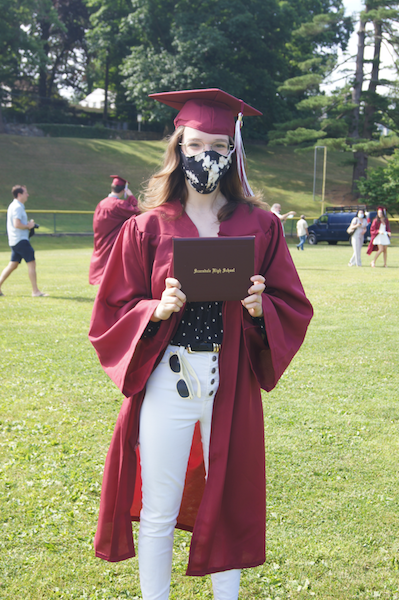 Governor’s orders allowed for a graduation ceremony, in a fashion, for the 376 members of the Scarsdale High School Senior Class. Following a joyous car parade on Tuesday June 23, the week closed with nine graduation ceremonies, on Friday June 26, beginning a 8 am and ending before 7 pm, on Dean Field.
Governor’s orders allowed for a graduation ceremony, in a fashion, for the 376 members of the Scarsdale High School Senior Class. Following a joyous car parade on Tuesday June 23, the week closed with nine graduation ceremonies, on Friday June 26, beginning a 8 am and ending before 7 pm, on Dean Field.
The ceremonies were unusual, unique and designed to conform to a host of regulations. Student were divided into groups of 50-60 students and given instructions to arrive at a designated time. Each student was permitted two guests and sat with their families at a distance from one another. The grass underneath the tent had been painted with six-foot squares to ensure that graduates and their families stayed far apart. Everyone wore a mask making the event look like a scene from a “dystopian novel,” as suggested by SHS Principal Ken Bonamo.
Students marched in accompanied by a recorded rendition of pomp and circumstance, dressed in their hat and gowns. Many wore sweat socks and sneakers on their feet instead of dress shoes. After the national anthem, Principal Kenneth Bonamo gave a short but solemn speech, crediting the students with showing resilience, “through this pandemic that has turned our world into some version of a distressing dystopian novel and that changed your senior year in ways none of us could have imagined just four months ago."
Bonamo continued, "The uncertainty of the present moment is unlike anything many of us has seen, with a global pandemic and social unrest of truly historic proportions. At this moment, what college will look like for you in the fall is an open question. Also unknown is what our society, our economy, even our way of living will look like on the other side of this pandemic and the calls for social justice."
However, he concluded, "We are confident that your years in Scarsdale have given you the knowledge and skills to lead us forward as well as the value of non sibi to remember to use those talents for the betterment of all members of our society."
He read the following poem written by Lynn Unger:
On the Other Side
Through the looking glass,
down the rabbit hole,
into the wardrobe and out
into the enchanted forest
where animals talk
and danger lurks and nothing
works quite the way it did before,
you have fallen into a new story.
It is possible that you
are much bigger—or smaller—
than you thought.
It is possible to drown
in the ocean of your own tears.
It is possible that mysterious friends
have armed you with magical weapons
you don’t yet understand,
but which you will need
to save your own life and the world.
Everything here is foreign.
Nothing quite makes sense.
That’s how it works.
Do not confuse the beginning
of the story with the end.
At a virtual graduation ceremony on Tuesday June 23, 2020, School Board President Pam Fuehrer delivered the following remarks:
"It is with great excitement that I take this opportunity to congratulate you, Scarsdale’s Class of 2020. I know this class relatively well; I’ve known many of you since kindergarten, and I’m truly proud of you all. You are simply an amazing and very special class. Yes, you’re leaving the Scarsdale Schools in a way never experienced before, but you’ve also represented your class, and in fact all our high school students, in a very different way. I’ve been on the Board of Education for five years, and over that time I’ve clearly observed an increase in student voice and participation in school and district matters. You’ve stepped up, shared your thoughts, and made significant improvements to Scarsdale High School and also to district functions overall. You’ve made an impact, and while I recognize that our school and district administrators have encouraged that to happen, it really takes strong, capable kids to rise to that opportunity. You’ve each made the most of that chance. So, well done.
Your years in Scarsdale have given you an outstanding foundation. This senior class has shown us on small and large scales that you know how to be good citizens: to live comfortably with those who are different from you, to be respectful, compassionate, and to care about your neighbors; to assess, ideate, and refine; to work together; and to take care of yourselves when things get tough. Use this knowledge, trust in these fundamentals as you now go forward and take some risks.
The next eighteen years will (mostly) be all yours. Take advantage of them. I hope that you embrace your freedom, be curious, and explore new things. Your favorite teachers, coaches, and advisors quite likely had many moments of “should I, or shouldn’t I.” I’m not talking about the road less taken necessarily; I’m asking you to be brave, and say yes, when you aren’t so sure. Consider joining a club, volunteering, taking an internship or class, in something outside of your comfort zone, As the late, great lyricist Robert Hunter wrote, “once in a while you get shown the light in the strangest of places, if you look at it right.”
As you know. "20/20" means "perfect vision.” Do not expect or even care about perfect vision. Please allow for mistakes. I hope by now, you’ve learned that mistakes are good things. They’re one of the best learning tools we have, and you will never stop making them. So please, welcome them and use them.
Putting this all together, Hindsight is 20/20 means that you can easily tell what you should have done in the past, but it’s harder to decide what to do in the future. I am sure you will continue to rise to the occasion and make the most of opportunity. Embrace your freedom, allow for mistakes, and make the most of your next eighteen years. Make them fully and completely yours. Good luck to you all Class of 2020, and once again, congratulations!"
To add your graduation photo to our gallery: email us at scarsdalecomments@gmail.com.













